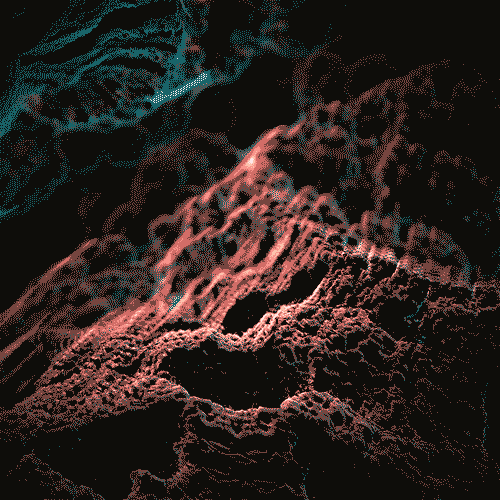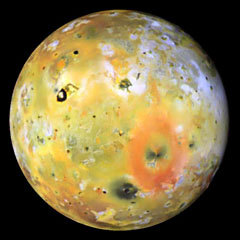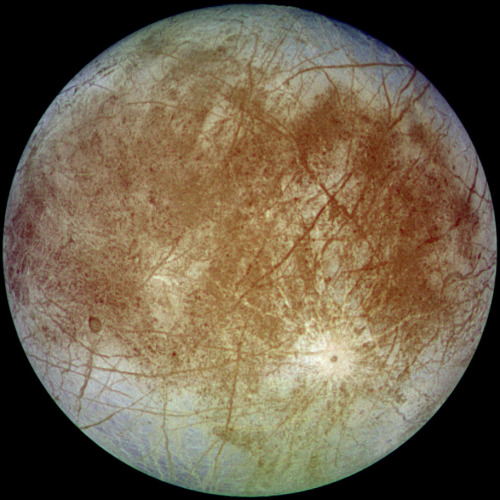Tres-4b-blog - ✰

More Posts from Tres-4b-blog and Others
![A Telephoto View Of The Orion Nebula And Surrounding Region Over A Saskatchewan Tree [OC]](https://64.media.tumblr.com/ca125d299c81eb090d31514dcdd51473/fe802700e6f484f8-96/s500x750/79a6c886b1b5a31e68e4295426ad972efd4299b4.jpg)
A telephoto view of the Orion nebula and surrounding region over a Saskatchewan tree [OC]

This is the binary code to the “Hello, World!” program, a simple computer program used in beginner classes to introduce basic programming syntax. The program’s sole function is to print “Hello, World!” on screen: an uplifting, symbolic gesture in which the computer (an emerging technology when the program was first created) greets the world full of hope, and of wonder.
NASA's $850-million mission to Mars is about to launch — here are 12 incredible facts you probably didn't know about the red planet

Martian volcano Olympus Mons is more than twice as high as Hawaii’s Mauna Loa, the tallest mountain on Earth from top to bottom.

Compared to the Grand Canyon on Earth, Valles Marineris on Mars is nearly five times deeper, about four times longer, and 20 times wider.

The red planet doesn’t have plate tectonics, which is what causes most quakes on Earth. But rising plumes of magma could trigger Mars quakes, as could meteorite impacts and the contraction of the world due to cooling. InSight will listen for them with its seismometer.

Martian oceans also had tsunamis like those on Earth. The tallest may have reached as high as 400 feet, just slightly shorter than the London Eye.

Like Earth, Mars has ice caps at its poles. The northern cap is up to 2 miles deep, is a mix of water and carbon dioxide, and covers an area slightly larger than Texas.

The average surface temperature on Mars is -81˚F, 138 degrees chillier than on Earth. But on a mid-summer day at the red planet’s equator, temperatures can peak at a balmy 95˚F.

Billions of years ago, Mars had oceans and flowing water. But adding them up would give you just 1.5% of all water on Earth today.

Mars has almost as much surface as Earth has land — but that doesn’t account for the 71% of Earth that’s covered in water.

The Martian atmosphere is 61 times thinner than Earth’s, and it consists almost entirely of carbon dioxide, which makes up just 0.04% of Earth’s atmosphere.

On Earth, sunsets are a brilliant mix of reds, pinks, oranges, yellows, and other colors. But on Mars they’re blue. Because air is dozens of times less dense on the surface of Mars than it is on our planet, white sunlight refracts less — leading to fewer colors (primarily blues).

Missions to Mars have become much rarer — after 23 launches in the 1960s and 1970s, we’ve launched just 10 in the new millennium (so far).

Getting to Mars is hard: About a third of the missions launched have failed.
-
 cybertoxico reblogged this · 1 year ago
cybertoxico reblogged this · 1 year ago -
 diencephalon liked this · 1 year ago
diencephalon liked this · 1 year ago -
 sciopticonexe reblogged this · 1 year ago
sciopticonexe reblogged this · 1 year ago -
 goopaspect liked this · 1 year ago
goopaspect liked this · 1 year ago -
 thund3rlord7 reblogged this · 1 year ago
thund3rlord7 reblogged this · 1 year ago -
 thund3rlord7 liked this · 1 year ago
thund3rlord7 liked this · 1 year ago -
 castcastle liked this · 1 year ago
castcastle liked this · 1 year ago -
 hackr liked this · 1 year ago
hackr liked this · 1 year ago -
 juztmo liked this · 1 year ago
juztmo liked this · 1 year ago -
 viktorbezic liked this · 1 year ago
viktorbezic liked this · 1 year ago -
 mr-e-is-me liked this · 1 year ago
mr-e-is-me liked this · 1 year ago -
 thebeanzzzness liked this · 1 year ago
thebeanzzzness liked this · 1 year ago -
 sundredstxr reblogged this · 1 year ago
sundredstxr reblogged this · 1 year ago -
 mirkokosmos liked this · 1 year ago
mirkokosmos liked this · 1 year ago -
 alieba liked this · 1 year ago
alieba liked this · 1 year ago -
 sombradth liked this · 1 year ago
sombradth liked this · 1 year ago -
 dzeeks reblogged this · 1 year ago
dzeeks reblogged this · 1 year ago -
 dzeeks liked this · 1 year ago
dzeeks liked this · 1 year ago -
 o-blivia reblogged this · 1 year ago
o-blivia reblogged this · 1 year ago -
 mildwizim reblogged this · 1 year ago
mildwizim reblogged this · 1 year ago -
 a-dream-seeking-light reblogged this · 1 year ago
a-dream-seeking-light reblogged this · 1 year ago -
 kemenek reblogged this · 1 year ago
kemenek reblogged this · 1 year ago -
 gilliansboobs liked this · 1 year ago
gilliansboobs liked this · 1 year ago -
 anim3pyr0 liked this · 2 years ago
anim3pyr0 liked this · 2 years ago -
 coma14 liked this · 2 years ago
coma14 liked this · 2 years ago -
 captmisfit reblogged this · 3 years ago
captmisfit reblogged this · 3 years ago -
 minkwolf-blog reblogged this · 3 years ago
minkwolf-blog reblogged this · 3 years ago -
 thoughts-of-thoughts reblogged this · 3 years ago
thoughts-of-thoughts reblogged this · 3 years ago -
 perfectframes reblogged this · 3 years ago
perfectframes reblogged this · 3 years ago -
 triptych-schift liked this · 3 years ago
triptych-schift liked this · 3 years ago -
 jamirokwai liked this · 3 years ago
jamirokwai liked this · 3 years ago -
 etheraum liked this · 3 years ago
etheraum liked this · 3 years ago -
 rostuar liked this · 3 years ago
rostuar liked this · 3 years ago -
 viladis1971 liked this · 3 years ago
viladis1971 liked this · 3 years ago -
 murheenkryynimakkara liked this · 3 years ago
murheenkryynimakkara liked this · 3 years ago -
 strakhaz reblogged this · 3 years ago
strakhaz reblogged this · 3 years ago -
 peryhd2 liked this · 3 years ago
peryhd2 liked this · 3 years ago -
 bprodukt liked this · 3 years ago
bprodukt liked this · 3 years ago

















